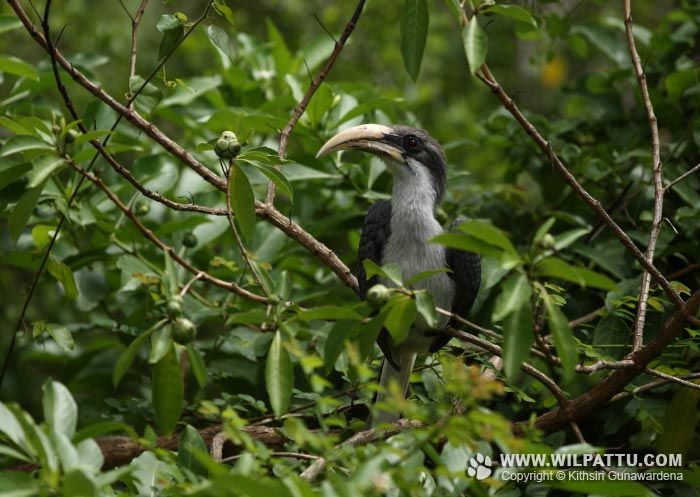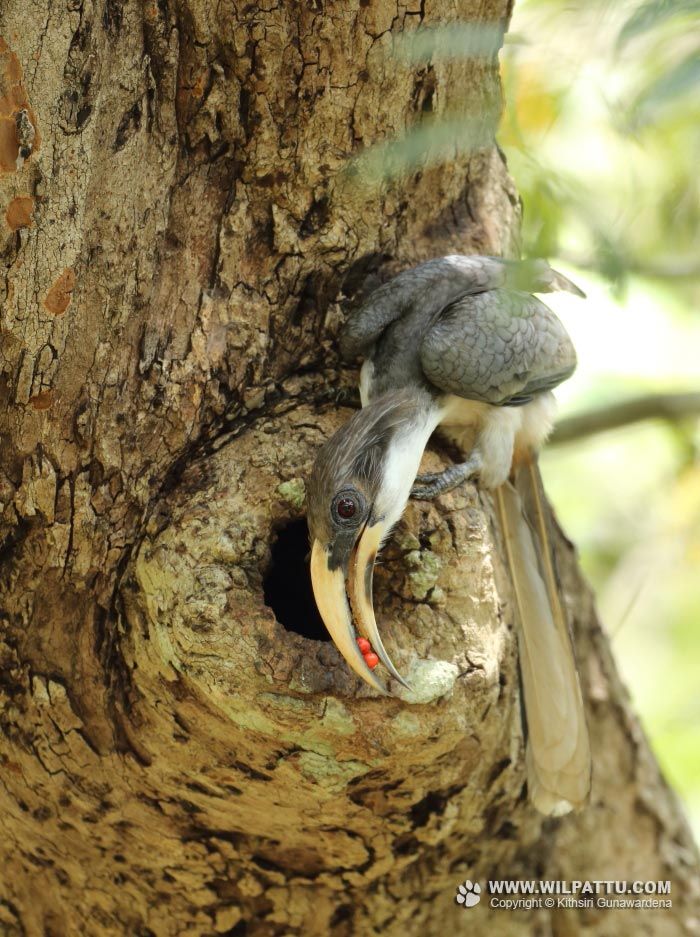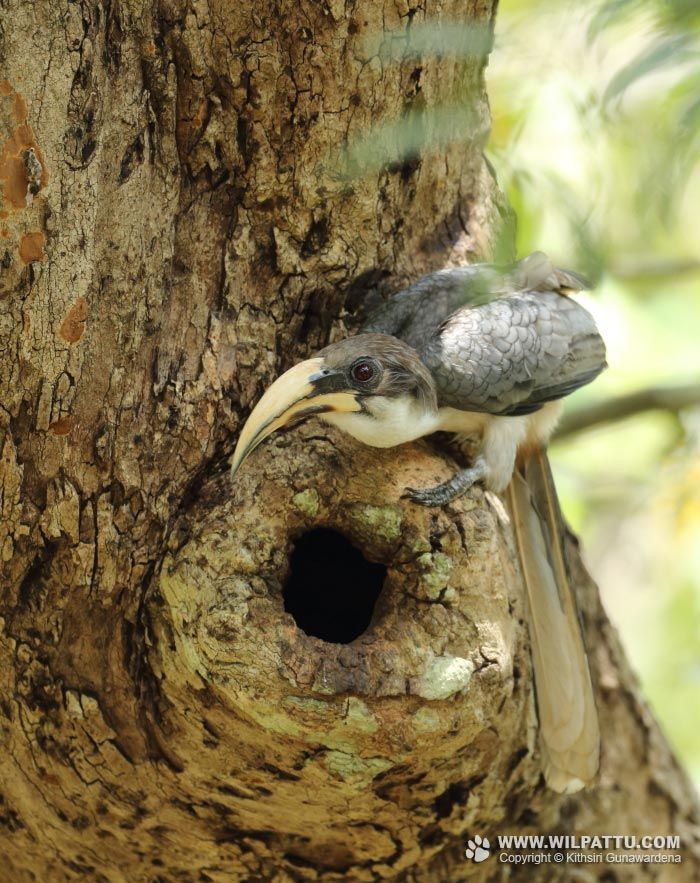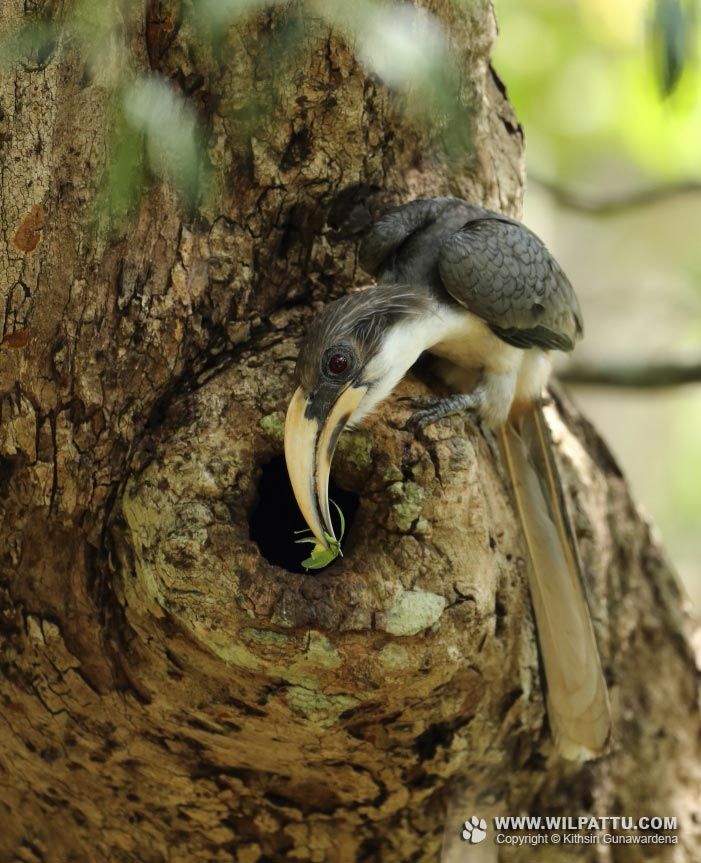
Birds ‹‹ Go Back
This is a species, which is endemic to the country.
The conservation status of this species is regarded as Least Concerned (National Red List 2012).
This species is strictly protected under schedule IV of the Fauna and Flora Protection Ordinance as amended by Act No. 22 of 2009.
I have seen this species in forests and well-wooded gardens in the low country wet, dry and intermediate zones. The highest altitude at which I have seen it so far has been in the Knuckles forest reserve at Kalugala and Kosgolla at 860 meters. In the north I have seen it at Veravil in the Chunnaweli forest just below Punareen. I did not come across it in the Mannar Island.
In February 1997 I observed nesting of this species at Bodinagala. The nest hole was about 15 feet from the ground on a Wal Del Artocarpus nobilis tree growing by the side of the road. The male would cautiously visit the nest and feed his family with fruits disgorged from his crop. The ground out side the nest was littered with seeds discarded by the female and the chicks are feeding on the edible parts. The nesting behavior of this species is very interesting. The pair would choose a tree with a suitable hole or a cavity and the female will then move in to lay and incubate her eggs. Once inside she will shed all her flight and tail feathers. Both the male and the female cement the opening of the nest with a mixture of their own droppings and saliva until only a narrow vertical slit is left to enable the male to feed the female and the young. The male will feed the incubating female and the chicks there after until the chicks are ready to move out. These birds use the same nest year after year.
I have seen them feed on fruits as well as grasshoppers, geckos and lizards.
In Wilpattu this is a very common species seen and heard through out the day. On a few occasions I observed Crested Hawk Eagles with immature Grey Hornbills in their talons.




